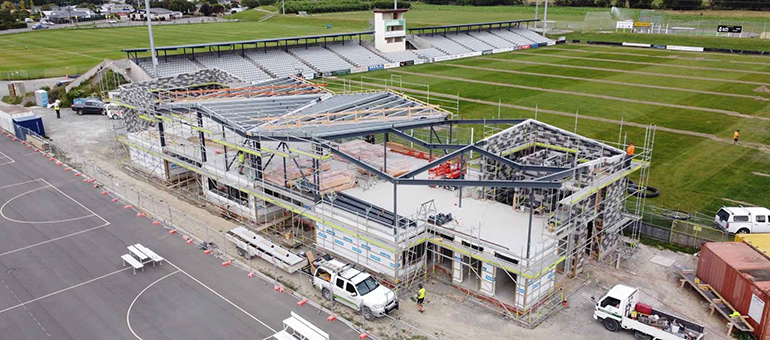Ngā mahi hanganga | Building and construction
On this page

© Marlborough District Council
Building and construction is a large employing sector in Marlborough. It employs about 10% of our people and accounts for about 20% of our self-employed. Having a strong building and construction sector is a key part of Marlborough’s growth and development.
There is strong demand within the sector due to three large projects planned within the next five years as well as ongoing residential construction.
Availability and affordability of housing has been identified as a key barrier in the region. Having a well-resourced construction industry will support efforts to address this.
Challenges and opportunities
- There is strong demand with the Picton Ferry Precinct Redevelopment, the Marlborough Schools Te Tatoru o Wairau Project, the new Summerset retirement village, as well as other residential and commercial construction and infrastructure projects.
- There is an opportunity to engage with the work of the Construction Accord.
- There is an estimated immediate shortage of about 1500 workers across 2022 and 2023 across the vertical workforce. Demand for workers is within carpentry, painting and decorating, and non-residential construction.
- In the past when there have been surges in demand for workers in the region, we have been able to source workers from other places in New Zealand or from overseas. The ability to rely on an outside workforce will be limited by the current nationwide construction boom and the impact of COVID-19.
- Training is offered locally through ITO and NMIT but this is multi-year training with no option to upskill quickly.
- There is a tangible opportunity to connect into schools and to build off the opportunities with the colleges rebuild.
- There is a lack of awareness of the reality of the industry and pre-trades training means that people drop out of apprenticeships.
- The sector is male dominated which can act as a barrier to women entering the profession.
- Limited accommodation and housing are restraining both attracting permanent workers and also a more short-term surge workforce.
Cross cutting challenges
- Perceptions of the industry
- Connections between industry and schools
- Housing and short-term accommodation for surge workforce.
Immediate actions
- Support implementation of Marlborough workforce plan in collaboration with Waihanga Ara Rau.
Progress to date
- We worked with BCITO and subsequently Waihanga Ara Rau (Construction & Infrastructure) Workforce Development Council (WDC) in the development of a Marlborough Workforce Plan.
- Three workshops were held with industry, education providers and government to explore opportunities to address the labour needs.
Key regional facts
Filled jobs
3,000
GDP
$203 million
Skills
Unskilled 3%
Low skilled 19%
Semi-skilled 36%
Skilled 10%
Highly skilled 32%
Local training
Waihanga Ara Rau (Construction & Infrastructure) and NMIT - apprenticeships
Migrant labour
5% of total workforce
Demographics
Male dominated 85%.
Almost one in five Māori men are working in construction.
Future growth
1,500 shortfall for 22/23 in vertical construction
Relevant plans
Marlborough(external link) — Waihanga Ara Rau Workforce Development Councils

